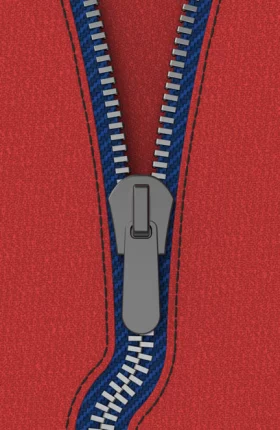In recent decades, companies have looked to technology, lean manufacturing, and global production to increase efficiency and reduce costs. But these tactics are leading to diminishing returns.
Many companies have moved production offshore, for instance. However, the attractiveness of that opportunity is diminishing as differences in global manufacturing costs between countries such as China and the U.S. have narrowed over the past ten years. (See How Global Manufacturing Cost Competitiveness Has Shifted over the Past Decade , BCG Data Point, May 2014.) At the same time, supply chains have grown more complicated—many spanning multiple continents and involving external suppliers—while customer demands have gotten more complex. As a result, companies are bringing production closer to home markets (“nearshoring”) and sometimes “reshoring” production all the way back home to high-labor-rate countries. (See The U.S. as One of the Developed World’s Lowest-Cost Manufacturers , BCG Focus, August 2013.)
The combination of large, fast-moving, and varied streams of big data and advanced tools and techniques such as geoanalytics represents the next frontier of supply chain innovation . When they are guided by a clear understanding of the strategic priorities, market context, and competitive needs of a company, these approaches offer major new opportunities to enhance customer responsiveness, reduce inventory, lower costs, and improve agility.
Companies can optimize distribution, logistics, and production networks by using powerful data-processing and analysis capabilities. They can also improve the accuracy of their demand forecasts, discover new demand patterns, and develop new services by sharing data with partners across the supply chain. In addition, they can increase asset uptime and expand throughput, engage in preventive maintenance of production assets and installed products, and conduct near real-time supply planning using dynamic data feeds from production sensors and the Internet of Things.
Related content: Inside Ops: Increasing Competitiveness Through Operational Excellence .
Three High-Potential Opportunities
But with so much available data and so many improvable processes, it can be challenging for executives to determine where they should focus their limited time and resources. In our work with supply chain operations across a range of industries, we see three opportunities that offer high potential in the near term. Companies that exploit them can generate significant revenues and profits, as well as reduce costs markedly, lower cash requirements, and boost agility.
Visualizing Delivery Routes. Logistics management challenges all but the most sophisticated specialists in “last-mile delivery.” Traditional routing software at advanced delivery companies can show drivers exactly where and how they should drive in order to reduce fuel costs and maximize efficiency. The most flexible systems can plan a truck’s route each day on the basis of historical traffic patterns. But many ordinary systems still leave a lot to be desired, producing significant slack in schedules and, in many cases, lacking the ability to dynamically visualize and calibrate routes at the street level.
Now, add the difficulty of aligning the deliveries of two or more business units or companies, each of which manages its own delivery system but must work with the others as one. We frequently find that by using big data and advanced analytical techniques to deal with tough supply-chain problems such as these, companies can identify opportunities for savings equal to 15 to 20 percent of transportation costs. Recent advances in geoanalytical mapping techniques, paired with the availability of large amounts of location data and cheap, fast, cloud-based computing power, allow companies to dynamically analyze millions of data points and model hundreds of potential truck-route scenarios. The result is a compelling visualization of delivery routes—route by route and stop by stop.
Consider the challenges experienced during the premerger planning for the combination of two large consumer-products companies. To better model the merger of the companies’ distribution networks, the two companies layered detailed geographic location data onto delivery data in a way that made it possible for them to visualize order density and identify pockets of overlap. The companies learned that they shared similar patterns of demand. (See Exhibit 1.) Vehicle-routing software also enabled rapid scenario testing of dozens of route iterations and the development of individual routes for each truck. Scenario testing helped the companies discover as much as three hours of unused delivery capacity on typical routes after drivers had covered their assigned miles.
Splitting the fleet between two local depots in one major city would reduce the number of miles in each route and allow trucks to deliver greater volume, lowering the effective cost per case. After the merger, trucks would be able to make the same average number of stops while increasing the average drop size by about 50 percent. The savings from a nationwide combination and rationalization of the two networks were estimated at $40 million, or 16 percent of the total costs of the companies combined. All this would come with no significant investment beyond the initial cost of developing better modeling techniques. By establishing a common picture of the present and a view of the future, the geoanalysis also delivered less quantifiable benefits: the results built confidence that the estimated savings generated as a result of the merger would reflect reality when the rubber met the road and would also create alignment between the two organizations prior to the often difficult postmerger-integration phase. However, results such as these are only the beginning. New visualization tools, combined with real-time truck monitoring and live traffic feeds from telematics devices, open up even more exciting opportunities, such as dynamic rerouting of trucks to meet real-time changes in demand.
Pinpointing Future Demand. Forecasting demand in a sprawling manufacturing operation can be cumbersome and time consuming. Many managers have to rely on inflexible systems and inaccurate estimates from the sales force to predict the future. And forecasting has grown even more complicated in the current era of greater volatility in demand and increasing complexity in product portfolios.
Now, companies can look at vast quantities of fast-moving data from customers, suppliers, and sensors. They can combine that information with contextual factors such as weather forecasts, competitive behavior, pricing positions, and other external factors to determine which factors have a strong correlation with demand and then quickly adapt to the current reality. Advanced analytical techniques can be used to integrate data from a number of systems that speak different languages—for example, enterprise resource planning, pricing, and competitive-intelligence systems—to allow managers a view of things they couldn’t see in the past. Companies can let the forecasting system do the legwork, freeing the sales force to provide the raw intelligence about changes in the business environment.
Companies that have a better understanding of what they are going to sell tomorrow can ship products whenever customers request them and can also keep less stock on hand—two important levers for improving operational performance and reducing costs. Essentially, with better demand forecasting, companies can replace inventory with information and meet customers’ demands in a much more agile way. We find that companies that do a better job of predicting future demand can often cut 20 to 30 percent out of inventory, depending on the industry, while increasing the average fill rate by 3 to 7 percentage points. Such results can generate margin improvements of as much as 1 to 2 percentage points.
For example, a global technology manufacturer faced significant supply shortages and poor on-time delivery of critical components as a result of unreliable forecasts. Salespeople were giving overly optimistic forecasts, whose effects rippled through the supply chain as the manufacturer ordered more than was really needed to ensure adequate supply. In addition, the company’s suppliers ordered too much from their own component suppliers. As a result, inventories started to increase across the value chain.
To understand the causes of poor forecast performance, the company used advanced tools and techniques to analyze more than 7 million data points, including shipment records, historical forecasting performance, and bill-of-material records. The company also ran simulations comparing forecast accuracy with on-time shipping and inventory requirements to identify the point of diminishing returns for improved accuracy. The underlying pattern of demand proved complex and highly volatile, particularly at the component level. Root cause analysis helped identify the sources of the problem, which included the usual delays and operational breakdowns, as well as more subtle but equally powerful factors such as misaligned incentives and an organization structure with too many silos.
In response, the company redesigned its planning process, dedicating more time to component planning and eliminating bottlenecks from data flows and IT processing. Furthermore, by improving the quality of the data for the component planners, the company was able to reduce the time wasted chasing data and fixing errors. And it developed more sophisticated analytical tools for measuring the accuracy of forecasts.
On the basis of these and other organizational and process improvements, the company expects to improve forecast accuracy by up to 10 percentage points for components and 5 percentage points for systems, resulting in improved availability of parts and on-time delivery to customers. The changes are expected to yield an increase in revenues, while lowering inventory levels, delivering better customer service, and reducing premium freight costs.
Simplifying Distribution Networks. Many manufacturers’ distribution networks have evolved over time into dense webs of warehouses, factories, and distribution centers sprawling across huge territories. Over time, many such fixed networks have trouble adapting to the shifting flows of supplies to factories and of finished goods to market. Some networks are also too broad, pushing up distribution costs. The tangled interrelationships among internal and external networks can defy the traditional network-optimization models that supply chain managers have used for years.
But today’s big-data-style capabilities can help companies solve much more intricate optimization problems than in the past. Leaders can study more variables and more scenarios than ever before, and they can integrate their analyses with many other interconnected business systems. Companies that use big data and advanced analytics to simplify distribution networks typically produce savings that range from 10 to 20 percent of freight and warehousing costs, in addition to large savings in inventories.
A major European fast-moving-consumer-goods company faced these issues when it attempted to shift from a country-based distribution system to a more efficient network spanning the continent. An explosion in the volume and distribution of data across different systems had outstripped the company’s existing capacity, and poor data quality further limited its ability to plan.
The company used advanced analytical tools and techniques to design a new distribution network that addressed these rising complexities. It modeled multiple long-term growth scenarios, simulating production configurations for 30 brands spread across more than ten plants, each with different patterns of demand and material flows. It crunched data on 50,000 to 100,000 delivery points per key country and looked at inventory factors across multiple stages. Planners examined numerous scenarios for delivery, including full truck loads, direct-to-store delivery, and two-tier warehousing, as well as different transport-rate structures that were based on load size and delivery direction.
Unlocking insights from this diverse data will help the company consolidate its warehouses from more than 80 to about 20. (See Exhibit 2.) As a result, the company expects to reduce operating expenses by as much as 8 percent. As the number of warehouses gets smaller, each remaining warehouse will grow bigger and more efficient. And by pooling customer demand across a smaller network of bigger warehouses, the company can decrease the variability of demand and can, therefore, hold lower levels of inventory: it is volatile demand that causes manufacturers to hold more safety stock.
How to Begin
Operations leaders who want to explore these opportunities should begin with the following steps.
Connect the supply chain from end to end. Many companies lack the ability to track details on materials in the supply chain, manufacturing equipment and process control reliability, and individual items being transported to customers. They fail to identify and proactively respond to problems in ways that increase efficiency and address customers’ needs. In order to have big data to analyze in the first place, companies must invest in the latest technologies, including state-of-the-art sensors and radio-frequency identification tags, that can build transparency and connections into the supply chain. At the same time, companies should be careful to invest in areas that add the highest business value.
Reward data consistency. Many companies struggle to optimize inventory levels because lot sizes, lead times, product SKUs, and measurement units are entered differently into the various systems across the organization. While big-data systems do not require absolutely perfect data quality and completeness, a solid consistency is necessary. The problem is that in many companies, management doesn’t assign a high priority to the collection of consistent data. That can change when leaders make the impact of poor data clear and measure and reward consistent standards.
Build cross-functional data transparency. The supply chain function depends on up-to-date manufacturing data, but the manufacturing function may tightly guard valuable reliability data so that mistakes will be less visible. The data could also help customer service, which might inform customers proactively of delayed orders when, for example, equipment breaks down. Data about production reliability, adherence to schedules, and equipment breakdowns should be visible across functions. To encourage people to be more transparent, management might assemble personnel from different functions to discuss the data they need to do their jobs better.
Invest in the right capabilities. Many operations leaders still don’t understand how this new discipline can provide a competitive advantage or how to convert big data into the best strategic actions. Hiring a team of top-shelf data scientists to do analytics for analytics sake is not the answer, however. Companies need to both partner with others and develop their own internal, diverse set of capabilities in order to put big data into a strategic business context. Only then will they be able to focus on the right opportunities and get the maximum value from their investments.
Companies that excel at big data and advanced analytics can unravel forecasting, logistics, distribution, and other problems that have long plagued operations.
Those that do not will miss out on huge efficiency gains. They will forfeit the chance to seize a major source of competitive advantage.








